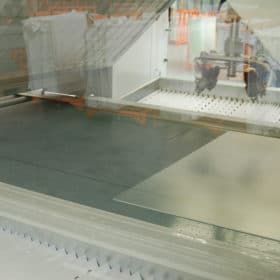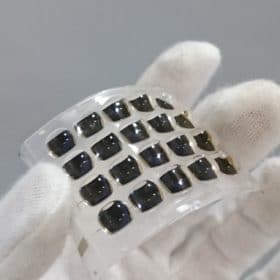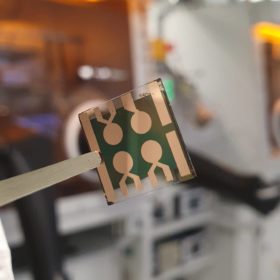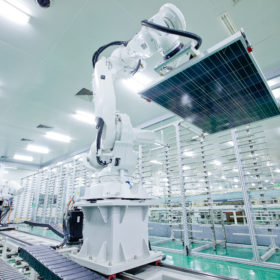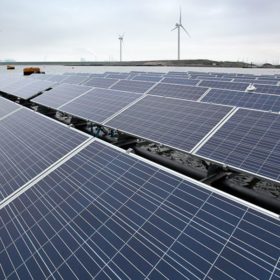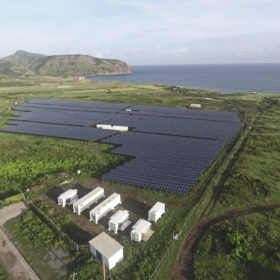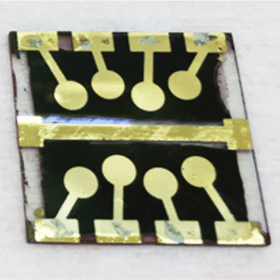Anti-soiling nanocoating for large-scale PV
Dutch company Rads Global Business has developed an anti-soiling coating for solar PV modules that is claimed to reduce cleaning cost by around 60%. The anti-reflective and anti-corrosive coating is also said to mitigate potential-induced degradation (PID).
Stretchable CPV module with 15.4% efficiency
Japanese scientists have fabricated a prototype CPV panel that could be applied on spherical surfaces with a curvature radius of 100 mm, and under outdoor one-sun irradiation. The module is based on a silicone concentrator lens, a thermoplastic polyurethane sheet, and a rigid III–V triple-junction solar cell.
Inverted perovskite solar cell with 21.1% efficiency and high moisture resistance
Australian scientists have built a perovskite solar cell based on 2D and 3D salts. By adding a fluorinated lead salt in the processing solution – normally used to form 3D methylammonium lead iodide – they were able to achieve a 21.1% efficiency, an open-circuit voltage of 1.12 V, a short-circuit current of 22.4 mA/cm2, and a fill factor of 84%.
JinkoSolar announces 23.01% efficiency for n-type monocrystalline panel
The PV module relies on Jinko’s TOPCon mono cell technology, for which a record efficiency of 24.9% was announced last week. TÜV Rheinland has confirmed the result.
South Korea may tender 4 GW of solar PV this year
The Korea Energy Agency (KEA) will likely launch two 2 GW tenders in April and October. These will include the procurement of large-scale solar PV parks for the first time.
Turkey to hold 1 GW solar tender between March 8-12
The tender will be open to PV projects ranging in size from 10 to 20 MW. The Turkish government has set a ceiling price of TRY0.35 ($0.047)/kWh for the procurement exercise. The selected facilities will be located across 74 grid connection points and will have to rely on locally produced modules.
System design key to enhancing cooling effect of water in floating PV
Researchers in the Netherlands and Singapore have measured irradiance-weighted average temperatures of floating PV systems in both countries and have compared the results with reference rooftop and ground-mounted PV systems. They have discovered that floating PV systems with open structures, which allow wind to pass beneath the modules, can provide a higher heat loss coefficient.
New method to build microgrids based on solar, hydrogen
The use of polymer electrolyte membrane fuel cells as backup power generation in solar microgrids could drive down costs and improve efficiency, according to an international group of researchers. They have proposed a new energy management system that could be ideal for hybrid solar-hydrogen microgrids in remote locations.
Water-splitting tech to reduce moisture in perovskite solar cells
Italian researchers have engineered a hole extraction layer with water-splitting additives to reduce the impact of moisture in perovskite PV devices. They claim that the method ensured a power conversion efficiency of more than 9% in perovskite cells stored for a month in a water-saturated atmosphere.
Dutch business regulation agency rules network operators lacking capacity are allowed to deny grid-connection
The Netherlands Authority for Consumers & Markets has established that the first-come, first-served principle applied by grid operators is the correct approach to manage current grid congestion. The decision was taken to resolve a legal dispute between Liander and an agricultural entrepreneur that was denied grid access for a PV project.

